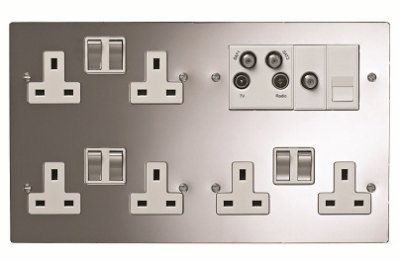It is not necessarily wrong to spur off two outlets nearby ...
Indeed and, by the same token, it is not necessarily wrong (let alone 'appalling'!) to take two spurs from the same point on a ring (like one socket), provided only that the terminals can accommodate 4 conductors.
... but certainly it is required that consideration be given to the effects it will have on the ring. If you believe that it will unduly influence the current balance on the ring then it obviously is not permissible to do that.
Again, indeed, but I suspect that many of the people who are averse to two spurs from one point, or very close points, on a ring (or, indeed, to having two or more sockets close together on a ring) having given no, or inadequate, thought to the possible consequences - because, in many cases, proper consideration would tell them that there was no 'problem' ....
... if one considers the common situation of a 32A ring final wired in Method C 2.5mm² cable (hence CCC=27A), even in the most extreme situation (a total load of 32A applied to a single point on the ring), it is
impossible for any cable to be overloaded unless the 'point' is closer than about 16% (of total ring length) from one end of the ring. If the designer has enough common sense to design on the basis of a less extreme situation than that (no-one is going to connect a 32A load to one point on a ring!), then one can have multiple spurs or sockets much closer to the end of the ring than that without any risk of any cable being overloaded.
... and, as above, this does not only apply to spurs. It also applies when there are several sockets in close proximity on a ring (as often seen in kitchens and workshops) - and, again, a little calculation, on the base of realistic common sense assumptions, will also usually indicate that such a practice is anything but "appalling".
Kind Regards, John


